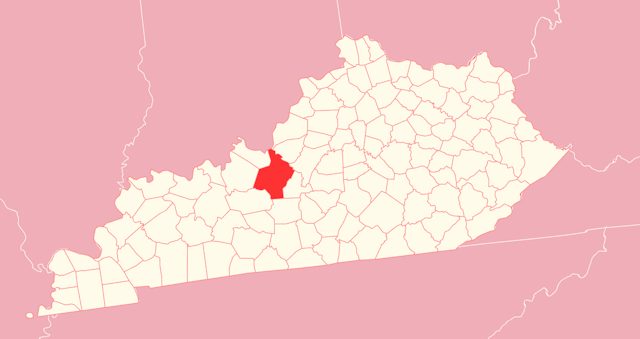Rehabs in Hardin
Hardin County is located in the state of Kentucky in the US. The total area is 630 sq mi (1,615 km2). Its population was 111,607 in 2021, decreasing by 0.65%.
As one of the largest provinces in KY, there were 50 drug-related deaths in 2021. Meanwhile, it registered 755.6 emergency department visits with substance use disorder (SUD) in 2021. According to data, inpatient hospitalization was 28.7 per 100,000 people. Alcohol driving deaths were 18% in the same year.
Despite many Hardin County rehabs, drug and alcohol use is overspread among adults and teens.
Drug and Alcohol Evaluation
Before undergoing the primary treatment, the doctors examine the patient. They pass the initial screening. Through questions, the specialist finds out what damage the substances have caused.
This stage may reveal more complex issues. That is, people will have to pass in-depth tests. According to the results, they will get appropriate treatment.
Rehab Programs in Hardin County
People start using chemicals for various reasons. Stress and psychological traumas are the reason for it. Some individuals use certain types of opioids for pleasure. However, all these cause addiction.
Thus, rehabs in Hardin County include all-level services and treatment methods that residents need.
Inpatient (IP) and Detox Programs
As a rule, IP is a residential level of care that starts with detox. When toxins leave the human body, the organism experiences stress. Accordingly, doctors manage this process with certain medicines. It helps the patient endure pain and control cravings.
The duration of detoxification depends on the severity of the patient's condition. It can be long or short-term.
After detox, the next stage is inpatient treatment. Residential facilities have created all the conditions so that patients may focus on their recovery. People learn coping skills and how to keep sobriety for a long time.
They also attend group and individual therapeutic sessions. Besides, outdoor activities such as yoga, fitness, swimming, rock climbing, etc., stimulate patients to overcome disease.
Outpatient (OP)
OP is a lower-commitment treatment plan. It takes place 10 hours weekly for 6-2 weeks. The advantage is that clients learn to live sober in the real world. Though, this program does not fit anyone. Only those who can control themselves may participate in this treatment course.
Intensive Outpatient (IOP)
IOP is a type of outpatient care that allows people to live at home while attending healing courses. They take place through group sessions held three times a week. The process lasts a month.
Clients also have the opportunity to participate in one individual therapy session per week. It helps specialists create a personal-approach healing plan. They may follow the change in the behavior of each patient.
Partial Hospitalization Program (PHP)
PHP is a type of inpatient care that allows people to spend nights at home while attending healing courses all day. This care involves the same methods as IP, but on the contrary, patients with severe symptoms cannot participate in PHP.
This level offers community support, art, music, writing therapies, individual and group counseling, and other services.
Prices for Luxury Services
Hardin County offers ordinary as well as prestige services. Generally, prices are different between programs.
Residential care is more expensive than outpatient care. But, through various payment options and insurance, all levels are available to everyone.
Luxury services start at $15,000 monthly.
Payment Options Without Insurance
In this province, residents have lots of payment options. The most common means is cash or self-payment. In addition, they can use various payment systems that provide discounts. They include different types of funds such as state or government, sliding fee scale, etc.
Rehab Programs for Teens
As mentioned above, substances are common among teenagers aged 12-17. Many minors are driving under the influence of alcohol or other substances. Their blood alcohol content was found to be .02-.08 or lower.
Hence, specific addiction educational centers exist for those under 21. They provide special intervention programs for the youth. All teenagers undergo an assessment. After that, they receive counseling and therapy. Additionally, the clinics pay special attention to young people with chemical-related crimes.

